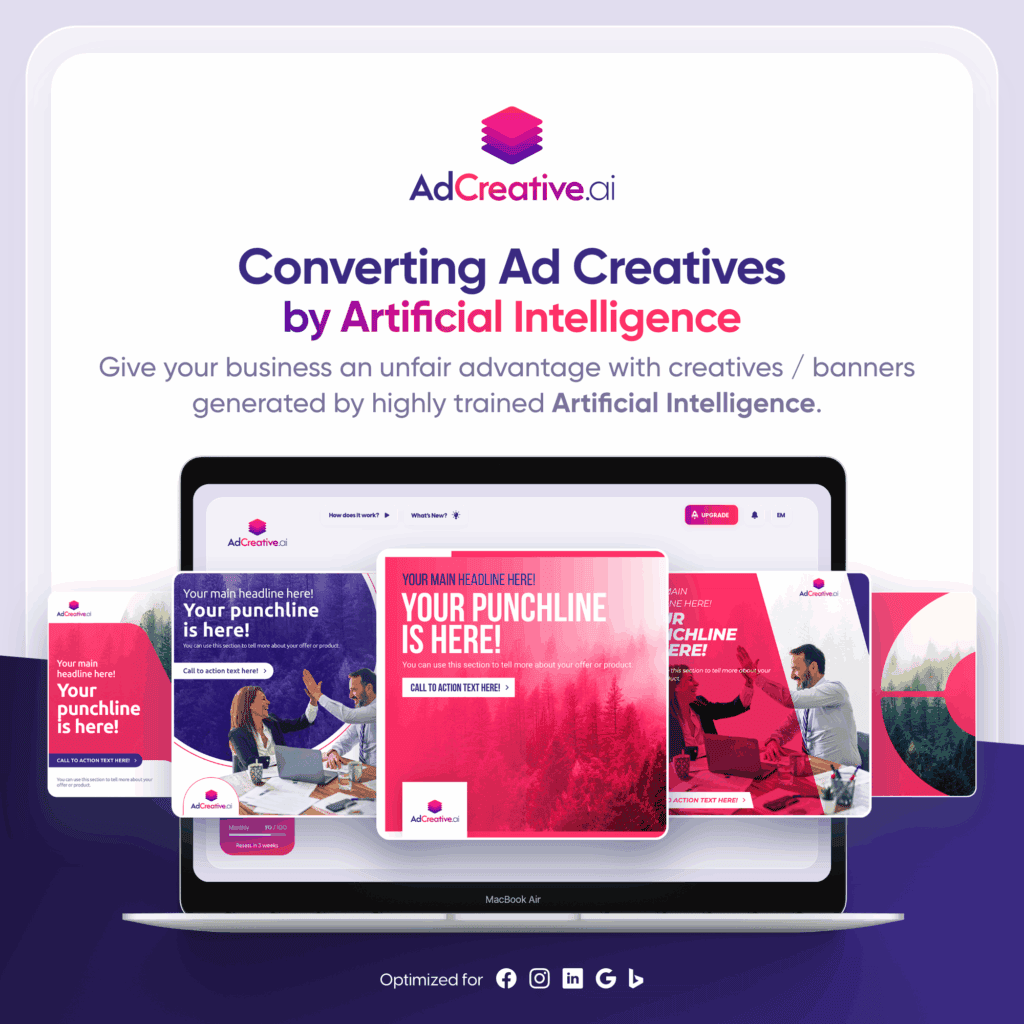Generate Leads with Affiliate Marketing

In marketing, there is often a lot of weight put on retaining and re-marketing to existing customers. This is due to the increased cost of marketing to new customers as opposed to existing ones. However, affiliate marketing is very different. It relies on constantly drawing in new customers to increase sales volume.
If you’re coming in without much prior knowledge, we have created a helpful beginner’s guide to affiliate marketing that will bring you up to speed.
In this article, we are going to dig deeper into how you can generate leads for strategic partners.
What is Active Lead Generation?
In short, active lead generation is the process of organically drawing in new prospects to your website. It is done by creating an environment for leads to engage with your brand before purchasing or even signing up – aka content.
It is no surprise then that 78% of content marketers use content to generate leads.
Active lead generation involves marketing to a wide audience rather than individual customers. This makes the process less time-consuming and more cost-effective. Publishers can leverage established trust and expertise within their communities to connect customers with specific brands and products.
It is reliant on leads discovering your website and content organically. But, you can give it a nudge by creating unique offers and invitations for potential customers.
5 Tips to Generate Leads for Affiliate Sales
1. Incentivize New and Existing Customers
It’s common to find deals and discounts offered exclusively to new customers, but there is an additional way in which you can boost lead generation. Existing customers can be leveraged to share your affiliate link with their networks by offering them the same discount on products as you would new customers.
For example, by using simple messaging like “refer a friend and you’ll both get 10% off your next order”, you can exponentially grow your audience and incentivize engagement.
2. Guest Posts
As mentioned previously, organic traffic is crucial to a successful affiliate partnership. One of the best ways that you can access new markets and increase audience reach is by writing content for third-party sites and drawing on their communities. It’s the equivalent of creating signposts for new customers back to your own website and it is done by using backlinks.
This approach requires tactful thinking. You want to target blogs that have a highly engaged audience, usually indicated by an active comments section and social channels. When backlinking to your site, you must link to a landing page, a specific product page, or even a micro-site if you are marketing a family of products or a major new release. When you generate leads from guest posts, relevance for the audience is key.
If you merely direct leads to your homepage, it requires additional steps that could easily turn off potential customers.
3. Social Media Marketing
Marketing on social media can appear daunting but it is simple when you stick to two primary rules:
- Market on the right channel for your audience
- Create high-quality and shareable content
While it may be tempting to “cover all bases” and create accounts on every channel available, your audience will most likely only engage with two or maybe three channels at best. For example, if you want to reach industry professionals, it is guaranteed that they will be more prevalent on Linkedin and Facebook than Instagram and TikTok.
Making content that is shareable is a little more tricky, so the smartest way to approach this is by focusing on value.
Can you provide advice and tips that will benefit them within a specific industry? Can you provide crucial insider knowledge that is rarely shared? You should be focusing on creating content that screams value and your audience will feel compelled to share it with their communities. When you generate leads from quality content you’ve helped qualify the lead ahead of time.
As far as optimization is concerned, quality and consistency are key. Quality ideas can be researched by seeing how key figures in an industry portray their social personas. Consistency can be ensured by using apps such as Hootsuite to help you plan content calendars.
And don’t be afraid to share content across channels. With some small tweaks, you can recycle content with channel-specific details such as emoticons, profile tags, and hashtags. Recycling content is preferable to re-sharing as it gives the impression of the content being unique and new, even if it is not.
4. SEO and Accessibility
Your landing page (and content in general) needs to be created with SEO as a key component, without overdoing it. Keywords are a great place to start and unless you already pay for keyword research tools, there are some free products that will give you a good headstart such as Ahrefs.
Be aware of long-tail keywords that are suitable for the products you are promoting. These tend to be more in line with what people actually search for and will usually have lower competition compared to keywords. If in doubt, search for your product in Google and take some inspiration from the “People also ask” section.
When it comes to content and creating forms, always remember to keep it simple.
Not only is it easy to lose your messaging in long blocks of text, but it will also put off anybody who struggles with cognitive disabilities such as ADHD or dyslexia. This is vital for completing a form or fully understanding what you are selling.
Your primary goal through lead generation is to reach as many people as possible, so don’t shut yourself off to the 10.8% of adults in the U.S. with a cognitive disability. Make sure you are not shutting doors to those who find online navigation a challenge by making the process of purchasing or signing up as simple as possible.
An easy example of this is requiring only the essential information to sign up or create an account. If your goal is to collect more data from your customers, it can be done so at a later stage. The first objective is to get them signed up!
5. Run paid ads
While organic traffic and high-quality content should be the main drivers for lead generation, you should not be afraid to optimize your efforts further with paid advertising. Investing in PPC (pay-per-click ads) will get your content in front of audiences more quickly than SEO.
Paid ads can also fill the inevitable gap between new inbound traffic that is ready to buy via your affiliate link and those still in the research phase of their journey.
A common concern for those interested in running paid ads is startup costs, however, this is somewhat of a myth. It is easy to get started with merely a few dollars (per day) in marketing across one or two channels.
When starting out, the crucial principle is to keep learning and continue to optimize your ad content to best serve your audience. A great place to start is with A/B testing with two versions of the same ad to gauge engagement. It is done by breaking ad content down into four parts:
- Headline: The blue link that should convey whatever is being offered with a keyword.
- Body text: A description of the page with some more detail about the offer.
- Link: Aways link to a landing page, product page, or dedicated micro-site.
- Keywords: Brainstorm a list of possible keywords and test each for engagement.
You can run as many tests as you like, just be aware that some combinations may not fit seamlessly together so you may need to compromise on one part or another. Inevitably, tracking the performance of ad content is crucial to the optimization process.
AdSanity Can Help
AdSanity subscribers have access to a variety of add-ons that allow you to optimize the A/B testing process. It can be facilitated by using the Rotating Ad Widget to display various versions of a single ad. The performance of each ad can then be tracked using Google Analytics Tracking Integration which also offloads the burden of tracking and storing data to Google Analytics thus optimizing the performance of your website – a win-win situation.
How to Succeed in Affiliate Marketing
The five tips in this article will enable you to cast a wider net attracting customers beyond your current reach. However, none of them will be effective unless you follow the foundational principle of successful affiliate marketing.
You must be familiar with the product or service you are promoting. Otherwise your audience won’t connect with your recommendation.
This will allow you to engage more effectively with your audience and maximize your revenue.
With good product knowledge, you can effectively serve as the expert in your field. Answer questions your audience may have about the product or service and communicate the benefits with greater authority. The more relevant the product is to your audience, the greater the chances they will purchase it.
If you promote irrelevant products or services, you can lose trust and credibility with your audience. This is both costly in terms of reputation and harmful to the efforts you have put into generating leads.
That is not to say that you cannot explore products on the fringe of your niche audience. However, approach them with careful consideration and, above all else, creativity.
Pronto para começar?
There are licenses available for all types of sites needs needs.
Find the AdSanity tier that is right for you.
Want to give AdSanity a try?
Find the plan that fits your site and jump in.
Ready to make your ads work for you?
Pick the plan that fits and get started.
Let’s get your ads running.
Choose the plan that works best for you and start today.
Time to take control of your ads.
Find your perfect plan and go for it.
Ready to Make Money With Your Site?
Get ads on your site in
60 minutes or less
with AdSanity.
With our 14-day money back guarantee, it’s easy to see if AdSanity is the right fit for you.
Tags
Our Community
Join our mailing list to keep up to date on everything happening with AdSanity and Pixel Jar.
Note: Your email address will be added to our CRM and be used to receive emails from Pixel Jar. You can unsubscribe at any time.




